
The University of Rochester is a private research university in Rochester, New York, United States. It enrolls approximately 6,800 undergraduates and 5,000 graduate students. It was founded in 1850 and moved into its current campus, next to the Genesee River in 1955. With approximately 30,000 full-time employees, the university is the largest private employer in Upstate New York and the 7th largest in all of New York State.
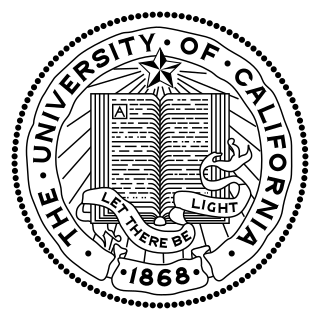
The University of California (UC) is a public land-grant research university system in the U.S. state of California. Headquartered in Oakland, the system is composed of its ten campuses at Berkeley, Davis, Irvine, Los Angeles, Merced, Riverside, San Diego, San Francisco, Santa Barbara, and Santa Cruz, along with numerous research centers and academic abroad centers. The system is the state's land-grant university. Major publications generally rank most UC campuses as being among the best universities in the world. In 1900, UC was one of the founders of the Association of American Universities and since the 1970s seven of its campuses, in addition to Berkeley, have been admitted to the association. Berkeley, Davis, Santa Cruz, Irvine, Los Angeles, Santa Barbara, and San Diego are considered Public Ivies, making California the state with the most universities in the nation to hold the title. UC campuses have large numbers of distinguished faculty in almost every academic discipline, with UC faculty and researchers having won 71 Nobel Prizes as of 2021.

The University of California, San Diego is a public land-grant research university in San Diego, California. Established in 1960 near the pre-existing Scripps Institution of Oceanography, UC San Diego is the southernmost of the ten campuses of the University of California, and offers over 200 undergraduate and graduate degree programs, enrolling 33,096 undergraduate and 9,872 graduate students. The university occupies 2,178 acres (881 ha) near the coast of the Pacific Ocean, with the main campus resting on approximately 1,152 acres (466 ha).

The University of California, Los Angeles (UCLA) is a public land-grant research university in Los Angeles, California, United States. Its academic roots were established in 1881 as a normal school then known as the southern branch of the California State Normal School which later evolved into San José State University. The branch was transferred to the University of California, becoming the Southern Branch of UC in 1919, making it the second-oldest of the ten-campus University of California system after the University of California, Berkeley.
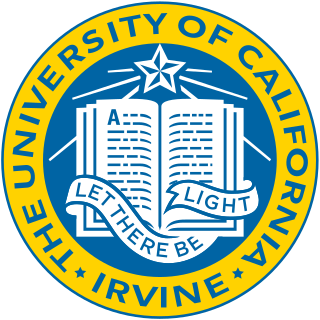
The University of California, Irvine is a public land-grant research university in Irvine, California, United States. One of the ten campuses of the University of California system, UCI offers 87 undergraduate degrees and 129 graduate and professional degrees, and roughly 30,000 undergraduates and 6,000 graduate students are enrolled at UCI as of Fall 2019. The university is classified among "R1: Doctoral Universities – Very high research activity", and had $523.7 million in research and development expenditures in 2021. UCI became a member of the Association of American Universities in 1996.

San Francisco State University is a public research university in San Francisco. It was established in 1899 as the San Francisco State Normal School and is part of the California State University system.

Stetson University is a private institution located in Central Florida, along the I–4 corridor. Established in 1883 as DeLand Academy, it was later renamed John B. Stetson University in honor of a generous donor. The university's main campus in DeLand spans 175 acres and boasts Florida's oldest collection of education-related buildings, including DeLand Hall, the state's longest-standing building used for higher education.

The University of Massachusetts is the five-campus public university system and the only public research system in the Commonwealth of Massachusetts. The university system includes five campuses, a satellite campus in Springfield and also 25 campuses throughout California and Washington with the University of Massachusetts Global.

The University of Massachusetts Lowell is a public research university in Lowell, Massachusetts, with a satellite campus in Haverhill, Massachusetts. It is the northernmost member of the University of Massachusetts public university system and has been accredited by the New England Commission of Higher Education (NECHE) since 1975. With 1,110 faculty members and over 18,000 students, it is the largest university in the Merrimack Valley and the second-largest public institution in the state. It is classified among "R2: Doctoral Universities – High research activity".

Harvard College is the undergraduate college of Harvard University, a private Ivy League research university in Cambridge, Massachusetts, United States. Part of the Faculty of Arts and Sciences, Harvard College is Harvard University's traditional undergraduate program, offering AB and SB degrees. It is highly selective, with fewer than four percent of applicants being offered admission as of 2022.

The University of Redlands is a private university headquartered in Redlands, California. The university's main, residential campus is situated on 160 acres near downtown Redlands. An additional eight regional locations throughout California largely provide programs for working adults.

Old Dominion University (ODU) is a public research university in Norfolk, Virginia. Established in 1930 as the Norfolk Division of the College of William and Mary, an extension school of the College of William & Mary for working professionals, members of the military, and non-traditional students in Norfolk-Virginia Beach area of the Hampton Roads region. The university has since expanded into a residential college for traditional students and is one of the largest universities in Virginia with an enrollment of 23,494 students for the 2023 academic year. The university also enrolls over 600 international students from 99 countries. Its main campus covers 250 acres (1.0 km2) straddling the city neighborhoods of Larchmont, Highland Park, and Lambert's Point, approximately five miles (8.0 km) north of Downtown Norfolk along the Elizabeth River.

Northeastern University is a private research university with its main campus in Boston, Massachusetts. Established in 1898, it was founded by the Boston Young Men's Christian Association as an all-male institute before being incorporated as Northeastern College in 1916, gaining university status in 1922. With more than 38,000 students, Northeastern is the largest university in Massachusetts by enrollment.
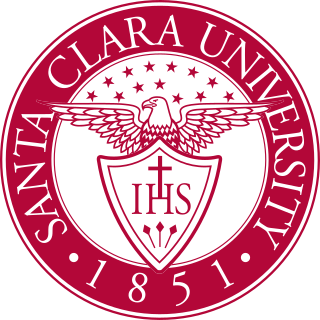
Santa Clara University is a private Jesuit university in Santa Clara, California. Established in 1851, Santa Clara University is the oldest operating institution of higher learning in California. The university's campus surrounds the historic Mission Santa Clara de Asís which traces its founding to 1777. The campus mirrors the Mission's architectural style and is one of the finest groupings of Mission Revival architecture and other Spanish Colonial Revival styles. The university is classified as a "Doctoral/Professional" university.

The Berklee College of Music is a private music college in Boston, Massachusetts. It is the largest independent college of contemporary music in the world. Known for the study of jazz and modern American music, it also offers college-level courses in a wide range of contemporary and historic styles, including rock, hip hop, reggae, salsa, heavy metal and bluegrass.
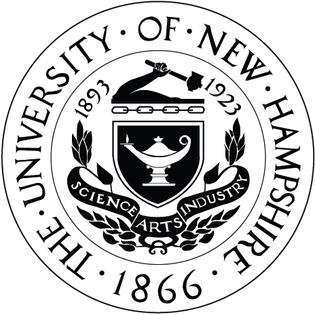
The University of New Hampshire (UNH) is a public land-grant research university with its main campus in Durham, New Hampshire. It was founded and incorporated in 1866 as a land grant college in Hanover and moved to Durham in 1893, and adopted its current name in 1923.
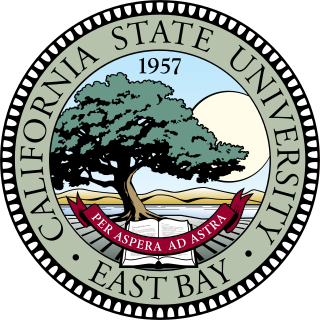
California State University, East Bay is a public university in Hayward, California. The university is part of the California State University system and offers 136 undergraduate and 60 post-baccalaureate areas of study. Founded in 1957, California State University, East Bay has a student body of almost 14,000. As of Fall 2021, it had 863 faculty, of whom 358 (41%) were on the tenure track. The university's largest and oldest college campus is located in Hayward, with additional centers in the nearby cities of Oakland and Concord.

DePaul University is a private Catholic research university in Chicago, Illinois. Founded by the Vincentians in 1898, the university takes its name from the 17th-century French priest Saint Vincent de Paul. In 1998, it became the largest Catholic university in terms of enrollment in North America. Following in the footsteps of its founders, DePaul places special emphasis on recruiting first-generation students and others from disadvantaged backgrounds.

University of the Pacific is a private university originally founded as a Methodist-affiliated university with its main campus in Stockton, California, and graduate campuses in San Francisco and Sacramento. It was the first university in the state of California, the first independent coeducational campus in California, and the first conservatory of music and first medical school on the West Coast.

Aurora University (AU) is a private university in Aurora, Illinois, United States. In addition to its main campus, AU offers programs online and at its George Williams College campus in Williams Bay, Wisconsin. Approximately 6,200 students are enrolled in bachelor's, master's, and doctoral degree programs at Aurora University.




























